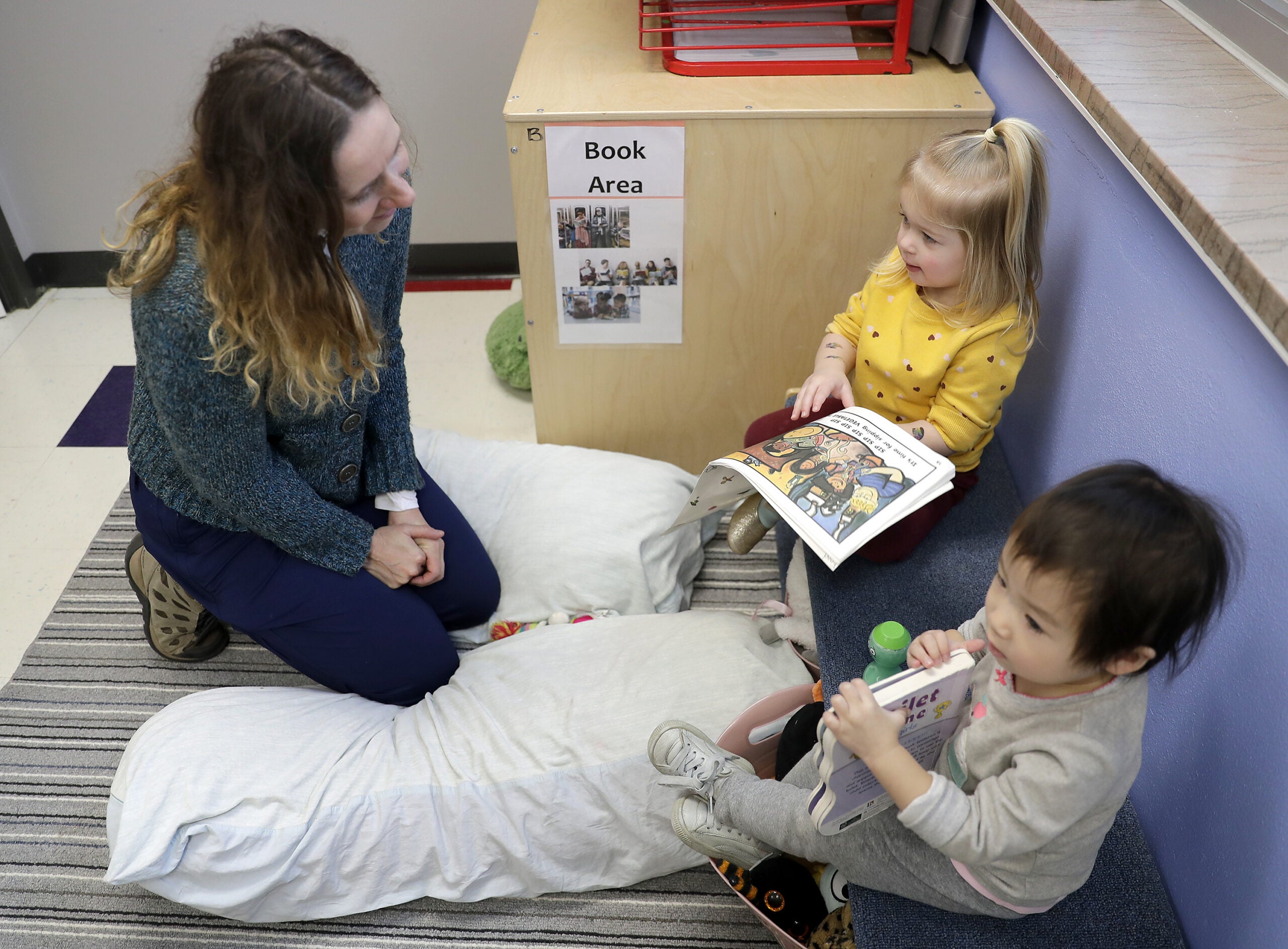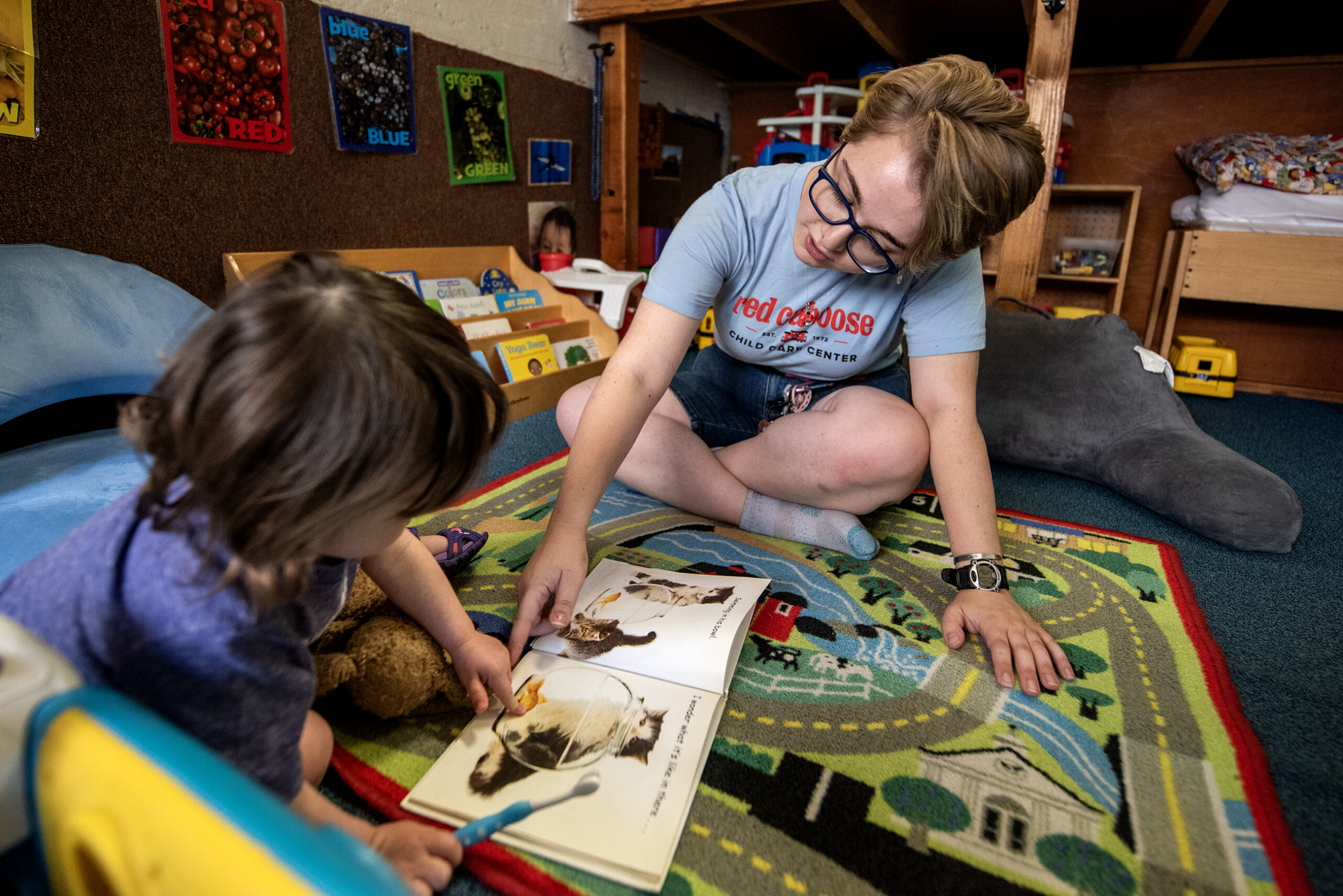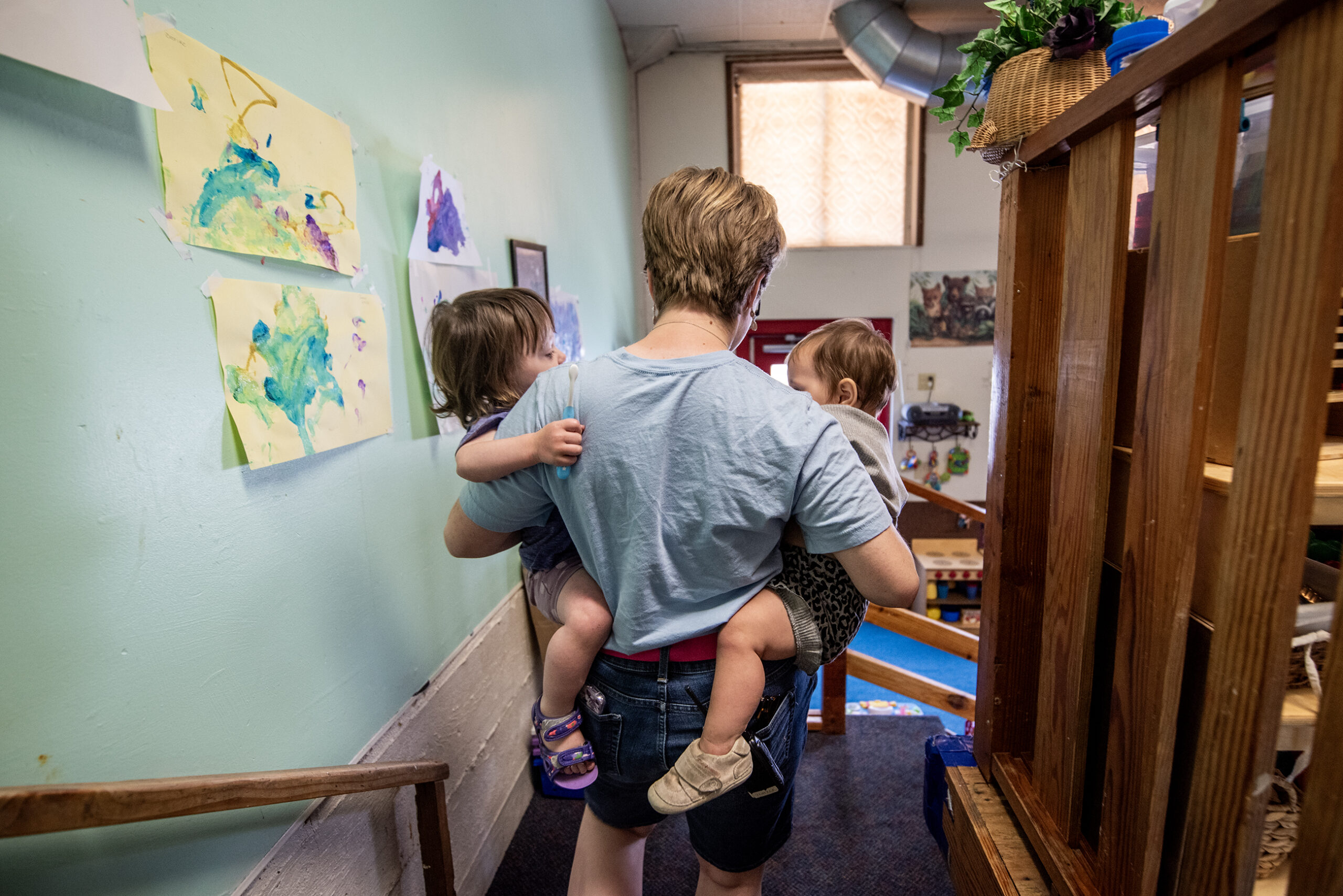Wisconsin’s child care crisis affects you, even if you don’t know it.
Perhaps the only expense greater than the cost to sustainably fund our child care system, however, would be the price we’d pay if we don’t. The Council for a Strong America estimates the child care crisis already costs Wisconsin families, businesses and governments a combined $1.9 billion every year.
Nearly nine in 10 working parents say child care costs them time and productivity at work, which may mean more work for others or jobs that don’t get done. Lost wages and fewer sales mean less tax revenue for local, state and federal governments.
Stay informed on the latest news
Sign up for WPR’s email newsletter.
Wisconsin’s broken child care system must be fixed for the sake of families, businesses, workers and the state’s general economic prosperity.
“An investment in (the child care) industry is an investment in all industries across Wisconsin because parents work in every industry,” said Ruth Schmidt, Wisconsin Early Childhood Association’s executive director.
There is no single solution that will address the shortage of care, centers’ high operating costs, workers’ very low wages and the exorbitant prices families pay for care.
Instead, industry experts and child care providers say effectively addressing industry needs requires government, employers and families to collaborate.
“It’s like a three-legged stool,” said Julie Stoffel, owner and administrator of Cradle to Crayons Learning Center in Kimberly. “If you take one of those legs out, it’s not going to stand up. It’s not going to be good.”
The USA TODAY NETWORK-Wisconsin, in collaboration with the NEW News Lab, talked to early childhood education experts, child care providers and parents to identify the gaps and discuss possible solutions to close them. Here’s what we found:
Child Care Counts sparked optimism — but its funding was just cut
In response to the COVID-19 pandemic, the state created Child Care Counts to provide monthly stabilization payments to qualified child care businesses. The funding may have served as hope that Wisconsin was finally beginning to realize how essential child care is and the importance of the job done by early childhood educators.
“Everybody is expecting child care will continue to limp along as it has historically done,” Schmidt said. “What’s changed is the industry had a taste of what it’s like to be supported.”
Child Care Counts monthly payments helped about 3,000 child care businesses stay open. For the first time, many providers had a stable revenue source outside of the cost parents pay for care. In some cases, it allowed for wage increases (although child care is still a notoriously underpaid profession), long put-off updates and even prevented substantial tuition increases.
“For us, Child Care Counts has been able to make us stable in the sense that I don’t worry about how I’m going to make ends meet because I know we’re going to be supported … but I am still conscious of every penny that is spent,” Renae Henning, administrator at Community Care Preschool and Child Care in Beaver Dam, told The Post-Crescent.
Child Care Counts funding is set to run out by 2024 — and recently, the Wisconsin Department of Children and Families announced the total monthly amount will be cut in half beginning with the May 2023 payment.
Six in 10 operators said if support ends they’ll have to raise tuition; one in three will cut wages, according to a survey of 1,173 Wisconsin centers.
Corrine Hendrickson, a licensed family child care provider in New Glarus and co-founder of Wisconsin Early Childhood Action Needed, said the grassroots group’s research found many Wisconsin providers may have to increase their rates by 20-40 percent to make up in lost revenue if Child Care Counts is not included in the state budget. With DCF’s recent announcement, rate increases may occur sooner, but by how much remains to be seen.
Advocates such as Hendrickson recognize Child Care Counts’ continuation is essential, but warn that it merely stabilizes the industry. For child care businesses to thrive, additional investment and structural changes are needed, she said.
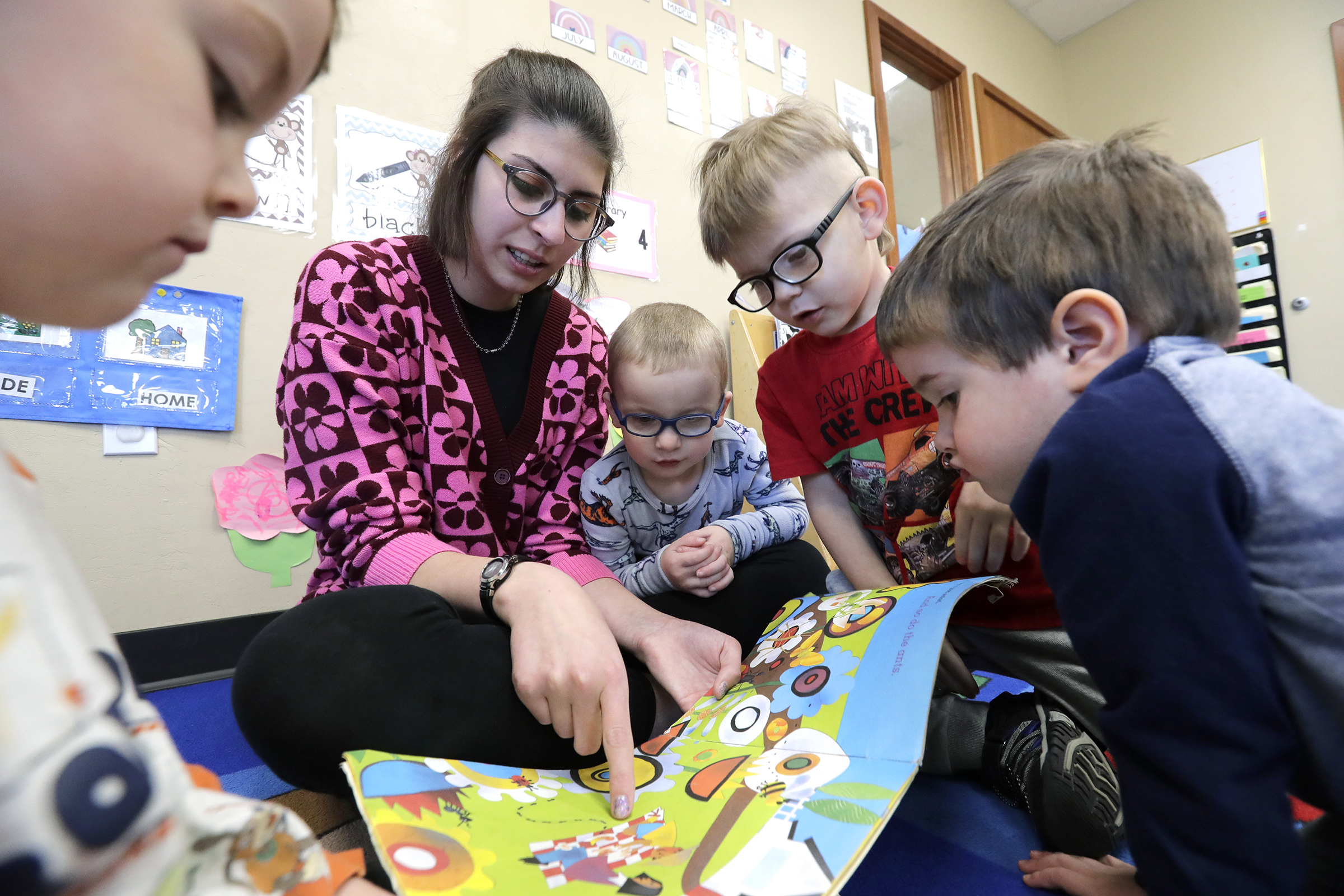
So, what can Wisconsin governments do to make an impact?
Wisconsin can sustainably fund child care programs shown to help families, businesses and child care centers with special attention to the full cost to provide care.
The Partner Up grant program, administered by the Wisconsin Department of Children and Families, helps businesses cover the true cost of child care and provides some families with relief from high costs. Partner Up dollars, in combination with Child Care Counts stabilization payments, helped many child care centers increase wages, renovate classrooms and complete necessary updates.
However, Child Care Counts and Partner Up largely rely on one-time dollars, leaving states like Wisconsin searching for a sustainable level and method of support. Some states have taken action to find long-term dollars for child care programs. In New Mexico, legislators amended the state constitution to tap existing education funding sources for early childhood education funding. The move should make care more affordable and support the state’s child care workforce.
Communities across Wisconsin also have found effective ways to use one-time dollars to address their area’s child care needs.
The North Central Wisconsin Workforce Development Board used American Rescue Plan Act dollars to start new regulated family child care programs — meaning those that are within a provider’s home — and help existing programs add slots. The Worker Advancement Initiative Child Care Project, as it is called, helped add 93 new, regulated family child care slots in Adams, Wood, Portage, Marathon, Lincoln, Langlade, Forest, Vilas and Oneida counties.
The regional program awards an average of about $4,000 per child care business. The money helps operators overcome barriers to expansion, said Elsa Duranceau, the previous WAI grant coordinator who spearheaded the project.
The city of Green Bay and the Brown County United Way in March allocated $100,000 in American Rescue Plan Act funding to seed a similar program via Family and Childcare Resources of Northeast Wisconsin, a regional industry resource center.
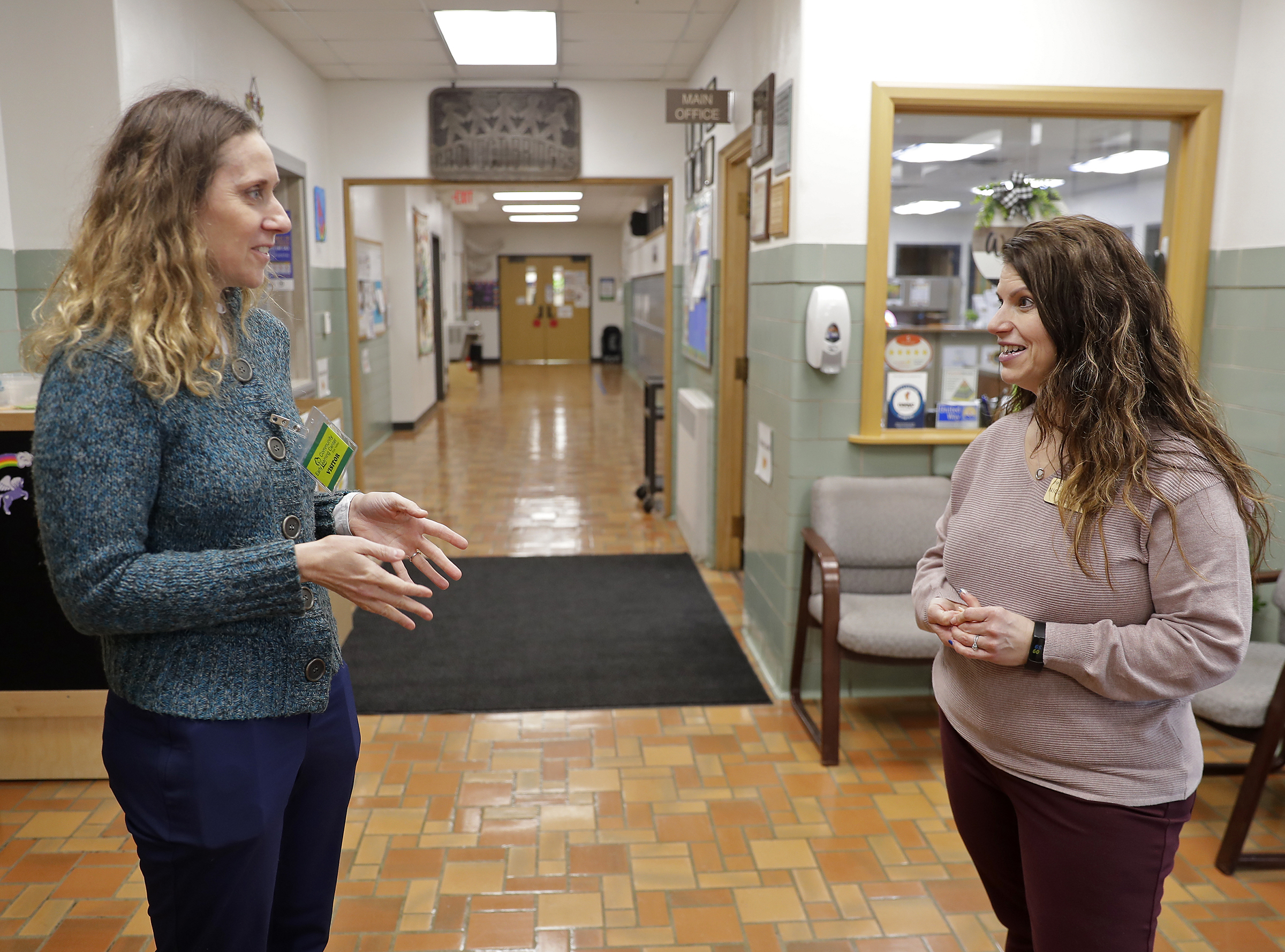
‘We’re not just babysitters’: Early childhood educators need recognition, reasonable wages
Teachers need specialized education to provide high-quality child care that helps young children develop vital social, emotional and cognitive skills. It can take time and require on-site field work.
Child care providers said poverty-level wages and minimal benefits contribute to high staff turnover, which can affect availability and quality of care.
“It’s unfortunate we can’t treat being an early childhood educator as a career choice anywhere in our country,” Schmidt said. “(Early childhood educators) often earn no benefits, no retirement savings. And they’re doing some of the hardest work at the most important time.”
When Vanessa Hanagan, a student in Fox Valley Technical College’s early childhood education program who also works at Apple Tree Connections Early Learning Center in Appleton, tells others about her career aspirations, she’s often told she’s “wasting (her) time and talent.” Her classmates agree it’s a frustratingly common response.
“I think if society comes to realize that we’re not just ‘babysitters’ to your children, I think that could change so much (about) pay and benefits just based on how people see us,” said Ysa Villagomez, another early childhood education student at FVTC.
It may not change public perceptions, but higher education institutions have recognized the industry’s workforce struggles and found small changes can have a big impact.
Appleton-based Fox Valley Technical College during the pandemic revised its field experience criteria to allow students with enough credits to work at a local child care center, according to Kathy Meetz, chairperson of FVTC’s Early Childhood Education Department. Centers can then factor their student workers into their child-to-staff ratios.
So far, five Wisconsin technical college systems have also introduced early childhood educator apprenticeships. David Polk, director of Wisconsin’s Bureau of Apprenticeship standards, said the agency continues to gauge early results. In general, 80 percent of apprentices stay with their employer for at least five years, Polk said.
He expects the apprenticeship will gain momentum, and could serve as a solution for an industry currently grappling with turnover rates of over 40 percent.
“As we onboard more of these individuals, that helps the greater community because if we have more teachers — more apprentices in the classroom — those child care centers can take on more (children),” Polk said.
In addition to apprenticeships, state Rep. Joy Goeben, R-Hobart, a former home child care operator, said expanding child care courses to high schools, streamlining child care center startup and certification, and making it easier for teachers to meet continuing education requirements could help the industry.
“If you have to spend so many hours to get certified when you’re trying to work, that can get in the way,” Goeben said. “Where’s the time for that? What can we do to help this process? Child care workers have a lot of expectations on them.”

Businesses have several options to help. What’s important is they do something
The majority of business owners and working parents recognize child care challenges affect productivity and exacerbate workforce shortages.
The question businesses face is how to effectively help their employees, and communities, when the options available can be overwhelming and their effects differ in each community. Actions can be small, like connecting workers with information about subsidies, resources and available care, or on something of a larger scale.
Appleton-based U.S. Venture pays for employee subscriptions to Care.com, a website that connects families who need child, senior or pet care with available providers that have passed a background check. Lori Hoersch, U.S. Venture’s chief people officer, said it has been popular with employees.
“Providing our team members a free membership allowed them to have an additional option available without additional cost,” Hoersch said in an email. “Today, our team members are still juggling busy lives, and providing extra support to balance the demands of work and family is very important to us.”
Speaking with those in the industry can help employers understand their area’s particular child care issues — whether it’s a lack of centers, a lack of staffing limiting slots, lack of second-shift care or a mix of all — and therefore determine where to best focus their efforts.
“A lot of really important stakeholders need to be involved. There’s a great place for collaboration in communities,” said Anne Hedgepeth, Child Care Aware of America’s chief of policy and advocacy. “Employers can play a role as a resource and be a voice for why we need these supports overall.”
Large employers might build on-site or near-site child care to help their employees, often by providing discounts and priority placement. When the center enrolls children from the broader community, benefits can reach outside just the company. But the construction of a new center may have unintended consequences on the existing child care landscape; many centers are limited in how many children they can serve because of staffing shortages.
“What we’re often concerned about is that when you stand up a new child care program, you’re going to be pulling staff from other child care programs. It’s basically shifting chairs on the Titanic,” Schmidt said.
More companies choose to give their workers monthly or annual stipends to help cover the cost of child care. Wisconsin Aluminum Foundry saw the connection between its worker retention and child care in early 2022 and has since provided employees with a $400 monthly stipend for care.
However, employer-sponsored stipends do not target all facets of the child care crisis.
“While incredibly helpful to families and a welcome step in the right direction, employer-sponsored child care stipends alone do not net additional revenue for child care businesses and therefore do not fix the industry’s broken business model,” Schmidt said.
Should we approach funding child care like we do roads?
Many in the child care industry fear that without immediate action, it faces imminent collapse.
For the industry to thrive, not just scrape by, people need to reassess their perceptions of early childhood education. Advocates say the current system does not work — and all of Wisconsin pays for it.
The key lies in changing society’s perception — and the funding model — of child care from a service to a public good, like infrastructure, Hendrickson said. Between raising the future’s workforce to retaining the present-day ever-shrinking one, all benefit from a healthy child care system.
“Child care is infrastructure, it is a core public service just like roads that we need to help the rest of society function properly,” said state Sen. Kelda Roys, D-Madison, who is an advocate for state child care investments.
Exactly how Wisconsin can make this shift remains to be seen. However, Hendrickson said two hallmarks must be present: it must consider the true cost of care, and be statewide as not to perpetuate inequities.
This story is part of the NEW (Northeast Wisconsin) News Lab’s fourth series, “Families Matter,” covering issues important to families in the region. The lab is a local news collaboration in northeast Wisconsin made up of six news organizations: the Green Bay Press-Gazette, Appleton Post-Crescent, FoxValley365, The Press Times, Wisconsin Public Radio and Wisconsin Watch. The University of Wisconsin-Green Bay’s Journalism Department is an educational partner. Microsoft is providing financial support to the Greater Green Bay Community Foundation and Community Foundation for the Fox Valley Region to fund the initiative. The mission of the lab is to “collaborate to identify and fill information gaps to help residents explore ways to improve their communities and lives — and strengthen democracy.”
Madison Lammert covers child care and early education across Wisconsin as a Report for America corps member based at The Appleton Post-Crescent. To contact her, email mlammert@gannett.com or call 920-993-7108. Please consider supporting journalism that informs our democracy with a tax-deductible gift to Report for America.
Contact Jeff Bollier at (920) 431-8387 or jbollier@gannett.com. Follow him on Twitter at @JeffBollier.
